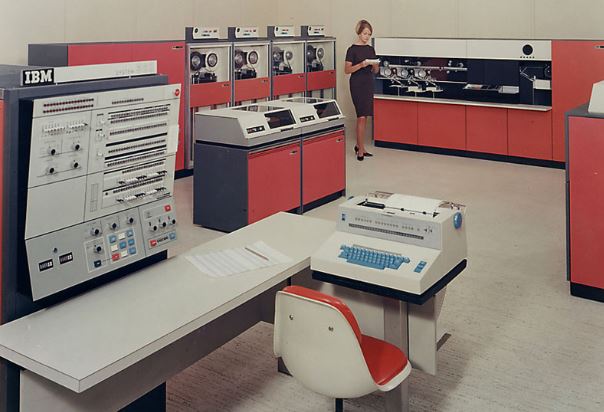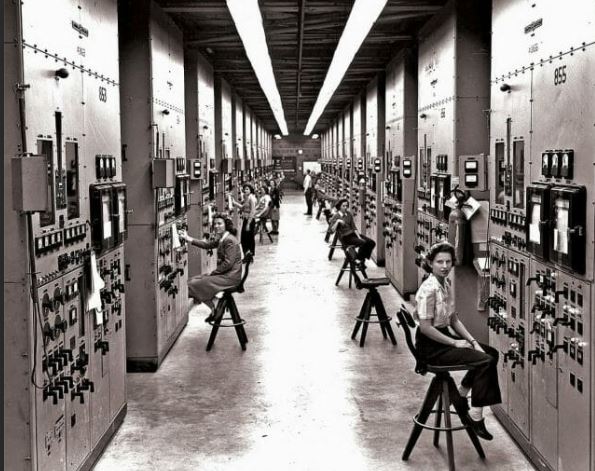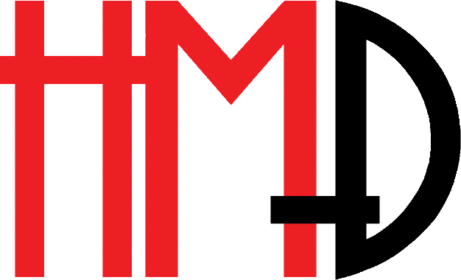1. Introduction
Just what is a project, isn’t any work you do a project? That’s what I once thought. And in a way that is true, but a project has a more formal definition and meaning. It is an exciting new career opportunity.
The Early Days
In the early days of my career I worked for a big research institution and we were investigating developing a nuclear power station using a novel way of enriching Uranium that would be used as fuel for the plant. Much of the information has been declassified but in those days it was all hush hush.

A fiend of mine landed the job of project manager and his department got a new IBM mainframe for the project management. I am not sure of the model, I think it was a model 40, it was smaller that the picture shown above, but with all the peripherals it was impressive!
Then I realized that project management was really a big thing especially if the Institution would buy him an IBM, not for him of course but to enable his department to manage the Institute’s research project! Note these points: the project involved a lot of money, it was urgent, it was seen to be strategic and involved a lot of people/disciplines.
I only had an analog computer in my department; it was huge because it used vacuum tubes – transistors were not available yet. And yet it helped with the design of control systems.

Through my friend a learned about the key role that project management played in the Manhattan Project. I learned about the concept of project management, and how my little research project fitted into the Institution’s power reactor project. So I dutifully typed up a stack of cards every week showing the percentage completion of my tasks – that’s how we input information into the IBM in those days, and I got to spend a while in the airconditioned computer room.
I chuckle now at how primitive that sounds, the IBM still was more powerful than what they had at Manhattan. But I believe my smartphone now has more computing power.
It was early days for both computers and project management as a discipline. As the Manhattan project had a military application, and it was war time, lots of money was made available, and military equipment suppliers saw new applications for project management and developed user friendly software like MS Project from Microsoft.
I left the research institute and started working for a military equipment supplier as a project manager. I received my project training during a bootcamp-style training workshop run by one of those early gurus.
2. What is project management (PM)
Definition
A project is a large objective, event or product that will consist of many individual tasks and that requires multiple people and several areas of expertise and facilities to complete.
It typically has constraints on funding and timing or is strategically sensitive. A project is often multi-disciplinary.
Not all projects will necessarily have all the elements mentioned in the definition.
2.1 The Project Manager?

Project management
In the diagram above, the project manager is shown as a person standing off to the side, that does not mean that he has been side-lined. On the contrary it is a very important position in an organization but does not fall in the traditional vertical management structure.
The Project Manager hands the project over to the client when the project is complete, during the project closure phase that is discussed later. In many cases the client is your own organization, like the research Institution that I work for. Management initiates the project on instruction of some ministry or the other.
Other Company (working with Project Partners)
In many cases the client is another company that our project is a component of. This happens frequently when a part of the main project requires special expertise that the main company does not have and it is then subcontract to smaller specialized companies like ours. Another possibility is that the main company got the contract by agreeing to certain political prescriptions – certain tasks have to subcontracted to companies specified by the client, to boost a region’s economy, to develop the skills inhouse for future projects, to enable the local company to also be the spare parts supplier.
The main contractor company already has a project manager, pm1, say. This project manager pm1 represents the main company in all activities and negotiates with the small company project manager pms1. Once negotiations are completed, pm1 hands the project request to the small company project manager pms1 and the work can commence! On completion of the project, the small company project manager pms1 hands the completed project over to the main contractor project manager pm1 who inspects the delivery and if it meets the requirements, will sign off the project to the small company project manager pms1 so that final payment can be initiated. pms1 submits an invoice together the pm1’s approval to the main company’s accounts department who will then issue a cheque to the small company accounts department.
2.2 Line Functions (where things get done)
In this typical situation there are several line functions or departments, each specializing in their area of expertise. I have shown two functions, manufacturing and marketing, in my diagram but there typically are many more like print shop, woodworking, drafting, legal affairs and so on.
Each line function is overseen by a line manager who manages the day to day operations of that department. They would usually have routine tasks that they need to do every day. Project-specific tasks have to be done over and above the routine tasks.
Scheduling Conflicts
Because of the different nature of routine and project tasks there is a potential for scheduling conflicts. It is up to the line manager how to organize it. He may decide to let one workstation do only project tasks for a period of time.
It often depends on the nature of the project task as it may tie up a resource for a while, maybe it is a lathe that has to be set up in a special way which takes time. The line manager may allocate a project task full time to an employee so she will no longer be available for routine tasks. This is usually only temporary.
Addressing Conflicts
It is important to note that the routine tasks are not the employees real work while the project tasks are a favor they are doing the organization – no, the project tasks are also real work and are just as much a priority for the company.
So it clearly is a situation with a potential for scheduling conflicts and that is for the line manager to make a judgement call. She may, usually after consultation with the project manager, allocate a higher priority to the project task than the routine task and thus disappoint her line worker.
It’s Not Personal!!
The responsibilities of the various team members should also be explained. There will be times when the team decides on an action that you disagree with. You should still vigorously defend your point of view, respectfully, as the team might have overlooked a fact that led to your point of view.
The team decision may still go against you – your task is then to do your best to implement the decision, remember it is not personal – sometimes it can get quite personal, we are only human after all. Then the line manager should start the peacemaking process and solicit the support of the director.
The Importance of Project Training
Line staff should be given regular training on the role and importance of projects in the company. If the company has a Human Resources Department, they should also be included in the training as they are notoriously ignorant of project management which not often included in their basic training – and project management places different demands on an organization and often need human resources interventions in new situations.
Team Responsibilities
The responsibilities of the various team members should also be explained. There will be times when the team decides on an action that you disagree with. You should still vigorously defend your point of view respectfully, as the team might have overlooked a fact that led to your point of view and that could have important ramification and may need correction.
It is healthy to disagree – agreeably!
The team decision may still go against you – your task is then to do your best to implement the decision, remember it is not personal. It is also to your advantage if the company does well in spite or your suggestion not being followed.
A company where there is a congenial atmosphere and disagreements are resolved amicably, is a pleasure to work for. Sometimes it can get quite personal, we are only human after all.
For example, some people tend to be possessive of their position and/or their equipment. “This is MY printer (or lathe or computer or whatever) and was not meant for that kind of work!” is a typical response. It may really become a problem when they see that people are using THEIR stuff improperly, leaving it dirty, without toner, paper etc. Keep in mind that even though it is the company’s equipment the person is still responsible to look after the equipment and it would be unfair to abuse the privilege they give you to use “their” equipment.
We often work under stress these days, and a problem like that can easily escalate leading to the company losing a valuable employee. Whatever the problem, it is for the line manager to intervene – the earlier the better. Often a quite with each of the individuals separately could cool things down and avoid escalation. She should start the peacemaking process formally and if it is unresolved, solicit the support of the director.
People’s Preferences
People are different. Some like routine in their lives while others thrive on doing new things and would often be the first to volunteer for projects, and that’s OK.
But you may not have all the necessary skills or equipment for the new project task. That does not necessarily pose a problem. You must nevertheless point this out early to your line manager so that she can see if the project schedule allows for the necessary training or equipment purchases.
It is in the company and the line manager’s interest to do this, as it allows the company to take on more advanced projects like the current one once you have the competency to do it.
You might desperately want the job but you have a colleague who is already qualified and would likely get the job – she always does. At work it is important that you remain open and transparent about your feelings. Explain to the line manager why you would like the job even though Mary can do it. Point out that if you also have the skill you can stand in for Mary if needed or even work with her to deal with a time crunch. But acknowledge Mary, you are not jealous of her position but you would like to have the skill. She might surprise you and agree pleasantly.
Turned Down?
A nasty possibility is that the manager cannot afford to give you that training at this point in time and decide to contract that aspect of the project to another company.
Again remember that it isn’t personal. Express your disappointment and try and understand the line manager’s reasons. You might be too valuable to her because your other expertise might be urgently needed on other tasks at this time.
Make sure she sees that you understand and accept her position. See if you can’t arrange another way of doing it, like moving your vacation to another part of the year, or perhaps doing the training over weekends. An employee who is willing to work like that is really valuable and appreciated.
The project manager is shown on the side. He is responsible to the Director. For projects he liaises with the line manager. A big part of his task is communication. He depends on the line managers to assess the particular project task they are given and to estimate the cost and the duration. The line manager allocates the individual employees which elements they need to. This is referred to as the Work Breakdown Structure.
2.3 Project Management (Where Nothing Gets Done)
The Project Manager collates all the information into the overall project planning. He would report the status and progress to management, usually in the form of charts that are easy for top managers to digest. A Gantt chart is often used.
If you do a search for project manager images, they are often shown as a juggler of sorts. This is an attempt to illustrate the many functions he has.

Other important functions of a project manager is to manage problems, like delays and cost overruns. This often involves complicated negotiations.
Project Loyalty
Basically he is a problem solver. His main loyalty is to the project, so he may often be in conflict with the Director which may require delicate negotiations as the director has overall responsibility – and is able to fire you! But if you have your facts to back you up, you should be OK.
In principle the project manager does nothing. At least nothing as far as the project is concerned. The line functions or departments are responsible for doing the work. If the project manager tried to get involved with the tasks, it would put him in a conflict of interest.
Gender Issues
Up to now we have referred to the project manager as “he”. In the early days project managers were mostly males as the project were mostly for defense and other military contracts, like developing and building ships, aircraft, radar systems, airports, etc. Not areas that women were traditionally interested in. But this is no longer the case. There are many excellent woman project managers in the field today. Even in military projects like the development and supply of field hospitals. It is a challenging but exciting career for both genders. Women tend to be quite good at negotiations and communication – skills very in demand in project management.
2.5 Project management Phases
One aspect of project management that we have not covered so far but is crucial to understand is that a project runs for a fixed time. It has a defined start and end. There specific phases, and times when responsibilities change. These phase are usually listed like this:
Project Initiation
Project Planning
Project Execution
Project Monitoring & Control
Project Closure
Several activities take place in each of the phases. A simple Google search for 5 Project phases will give a lot more information. For example under closure I would include a post mortem meeting to record what we did well and what perhaps not so well.
3.0 Final Comments
This document was meant as an overview of project management, not an exhaustive treatment of the discipline, there are many excellent textbooks for that. We did want to bring some excitement to what we believe is a rewarding career, and hence the personal approach that I have adopted in this discussion. As many of you know I have Parkinson’s and that has given rise to these courses. In the section on Christianity I discuss the influence my friend, who in addition to introducing me to project management. was a Seventh Day Adventist and introduced me to the topic of bible prophecy which in the end changed the entire direction of my life.
<- Return to Projects Home | Book Club Project Behind the Scenes ->
